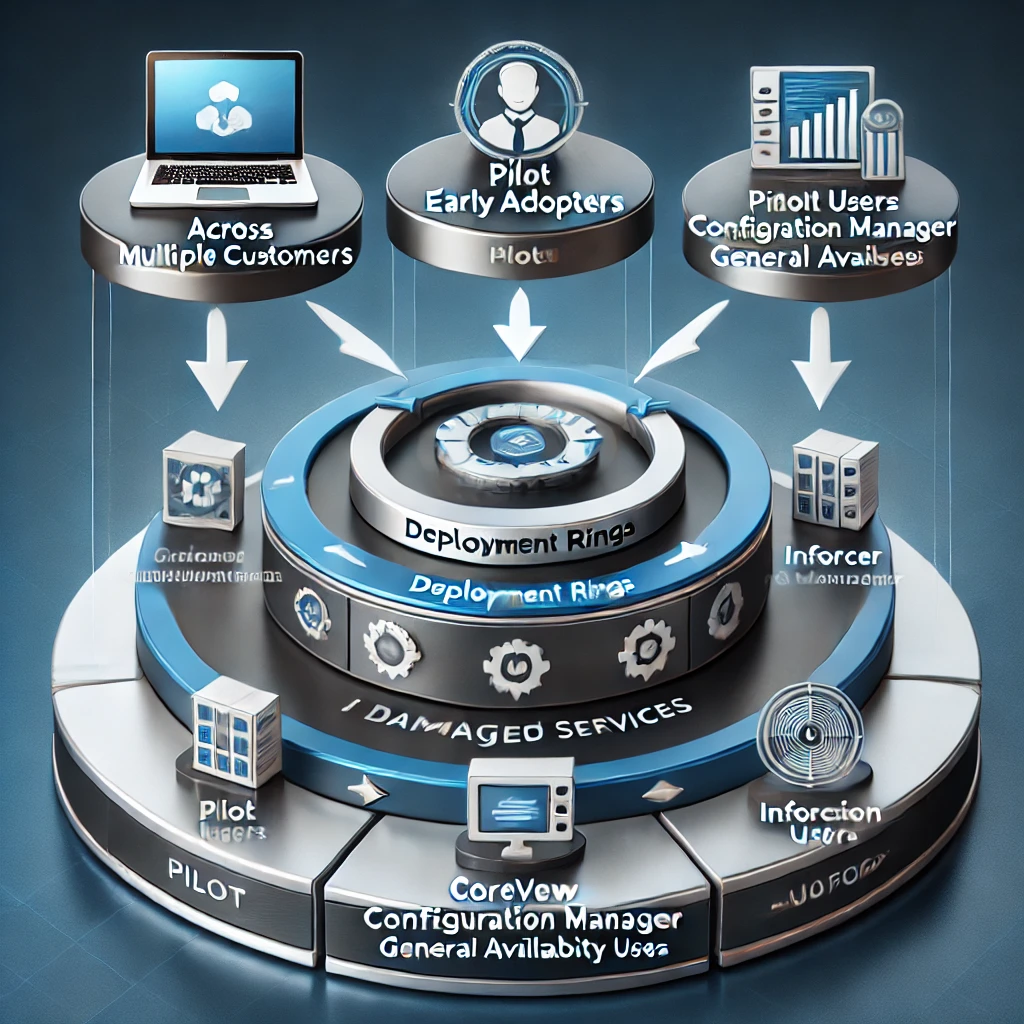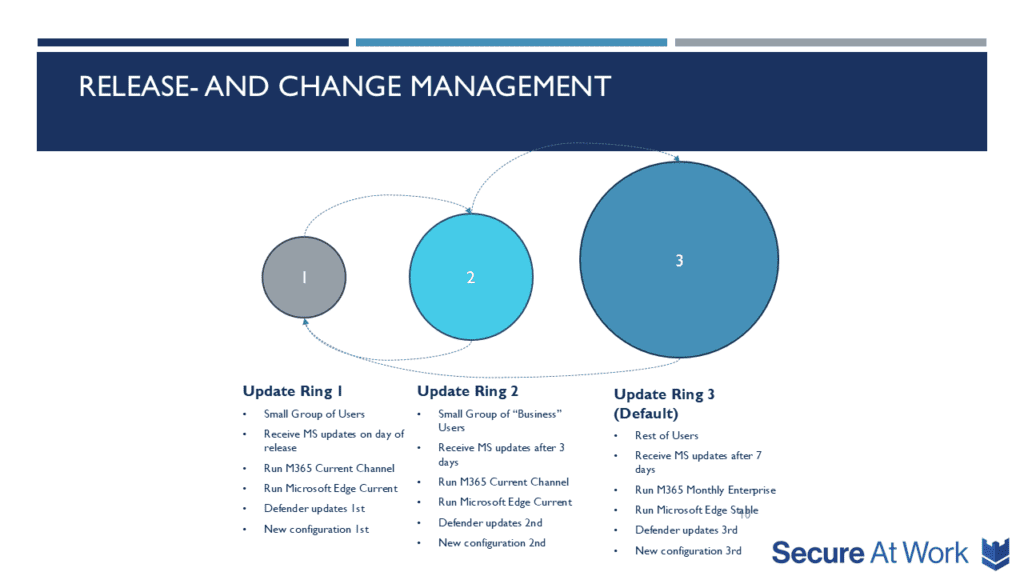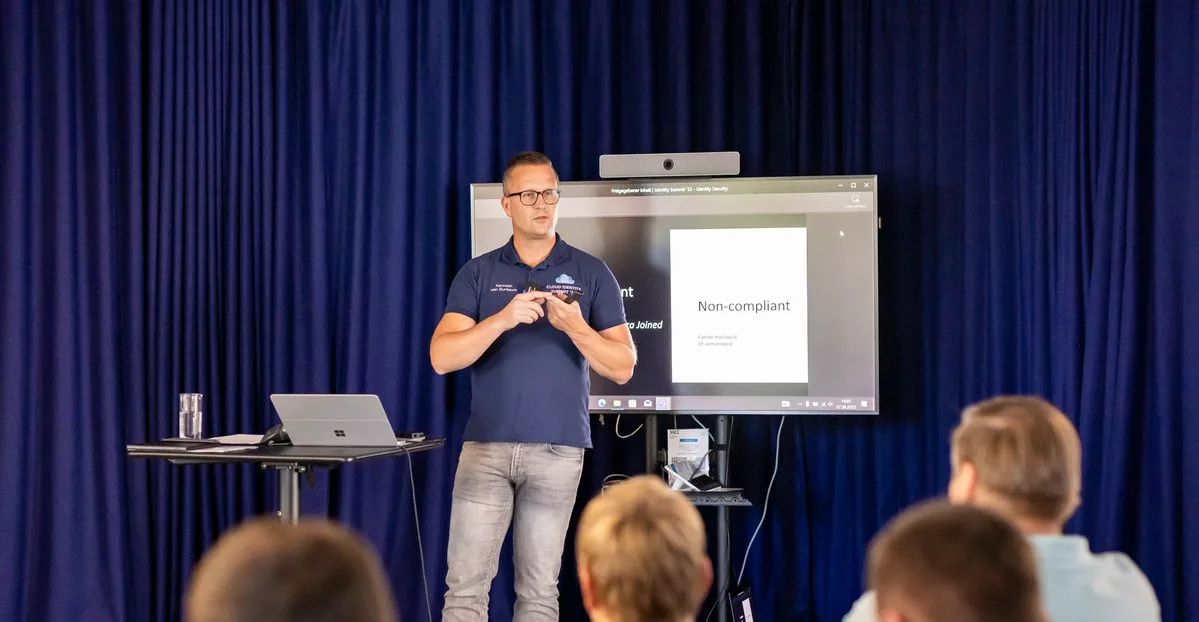Standardization and Professionalization of Managed Services

Managed Services providers (MSPs) face the challenge of managing growing numbers of customers effectively and efficiently. A structured approach helps standardize customer environments, optimize management tasks and implement changes in a controlled manner. This article explains how a unified Microsoft 365 setup and the use of deployment rings contribute to a predictable and secure management environment.
Why standardization and deployment rings?
A unified Microsoft 365 setup offers the following benefits:
- Predictability and efficient management – Fewer variations between clients make for easier and faster management.
- Better risk management – Problems can be identified early and resolved in a controlled manner.
- Scalability – New customers can be onboarded and managed faster.
- Consistent security and compliance – Fixed acceptance criteria and monitoring improves policy compliance.
Standardization of Microsoft 365 environments
A unified baseline for Microsoft 365 includes:
- Security Guidelines: Conditional Access, MFA, Defender solutions.
- Identity and access management: Entra ID, PIM.
- Licensing and compliance policies: For Android, iOS, macOS, Windows 10/11.
- Monitoring: Via Microsoft Sentinel and Lighthouse.
- Backup and recovery: Monitoring and testing recoverability.
Governance and Change Management
To ensure consistent management:
- Change Advisory Board (CAB): Reviews and approves changes.
- Periodic audits and compliance assessments: Check compliance with standards.
- Escalation Process: In case of deviations, Managed Services must be consulted before a solution goes into production.
- Formal review procedure: In case of deviations from the standard, a risk assessment is performed, after which a decision is made whether to accept, modify or reject the solution.
Release and Deployment Management
Deployment rings provide controlled deployment at two levels:
Rings over customers
- Pilot ring: Small group of customers test changes and validate impact.
- Early adopter ring: Broader rolled-out changes to a larger customer set.
- General Availability ring: All customers receive the update, if validated in previous rings.
Rings within a client environment
- Pilot users: Small group of internal IT staff or power users test the update.
- Early adopter users: a broader group of users will receive the update for further validation.
- General Availability Users: All employees within the organization receive the update.

Managed Services determines whether changes are needed immediately or included in the next release. This helps with risk management and ensures a controlled, scalable rollout of updates and configuration changes.
Management tasks, Automation and operational controls
To ensure stability and perform management tasks more efficiently, automation plays a crucial role. Advanced tooling allows tasks to be automated and standardized, reducing the management burden and making operational processes more efficient.
Automation of management tasks
Using CoreView Configuration Manager (formerly Simeon Cloud), Inforcer and SuperVision, Managed Services can automate the following tasks:
- Manage configurations and policies – Set and enforce default configurations in Microsoft 365.
- Automatic monitoring and alerting – Continuous scanning for anomalies and proactive management through Sentinel and Defender.
- Self-healing and auto-remediation – Perform automatic remedial actions for policy deviations.
- Bulk management and updates – Efficiently deploy changes to multiple client environments without manual actions.
By integrating these automation tools, it becomes possible to manage configurations quickly and consistently and correct any discrepancies immediately.
Operational controls
Regular checks are made to ensure stability:
- Backup checks: Verify and test backups.
- Security controls: Analyze Conditional Access policies and Defender incidents.
- Monitoring and logging: Monitoring Sentinel logs and tracking alerts.
- License management: keep up to date and clean up unused licenses.
- Compliance checks: check devices and users against policies and make updates.
Documentation and transfer
- Platform documentation is provided centrally and made accessible to all Managed Services employees.
- Customer-specific documentation is stored and maintained by Managed Services categorized by customer.
- Project Responsibility: The project team is responsible for delivering client-specific documentation upon handover to Managed Services.
Acceptance criteria for Managed Services.
1. Technical equipment
- Microsoft 365 set up to MSP standards and validated.
- Tenant institutions set up according to best practices.
- Deviations explicitly documented.
2. Identity and access
- User accounts managed through Entra ID.
- Privileged Identity Management (PIM) set up.
- Roles and rights clearly documented.
3. Licensing and compliance
- Licenses in accordance with MSP standard active.
- Compliance and security policies established and validated.
4. Monitoring and manageability
- Monitoring active and alerts visible to Managed Services.
- Backup and recovery processes set up and tested.
- Managed Services has required management rights.
5. Documentation and transfer
- As-built documentation complete and clear.
- Management process and escalation procedures documented.
- Exceptions explicitly defined and approved.
6. Training and communication
- Informed customers about management processes.
- Managed Services staff instructed on exceptions.
7. Support agreements and SLAs.
- SLAs established and clearly communicated.
- Any deviations formally recorded.
8. Deployment rings
- Changes are rolled out in phases according to structured deployment rings.
- Acceptance and validation criteria for each ring are clearly established.
Continuous improvement and evaluation
To ensure the effectiveness of standardization and management processes:
- Semi-annual reviews are conducted on the standard configuration and management process.
- Collected feedback and monitoring data are used to make improvements through the Change Advisory Board (CAB).
- Customers are actively involved in the improvement process through feedback sessions.
Conclusion
By standardizing Microsoft 365 environments and professionalizing management through deployment rings, management becomes more predictable, secure and efficient. By using fixed acceptance criteria and a continuous improvement cycle, service quality is ensured and Managed Services can function optimally.

